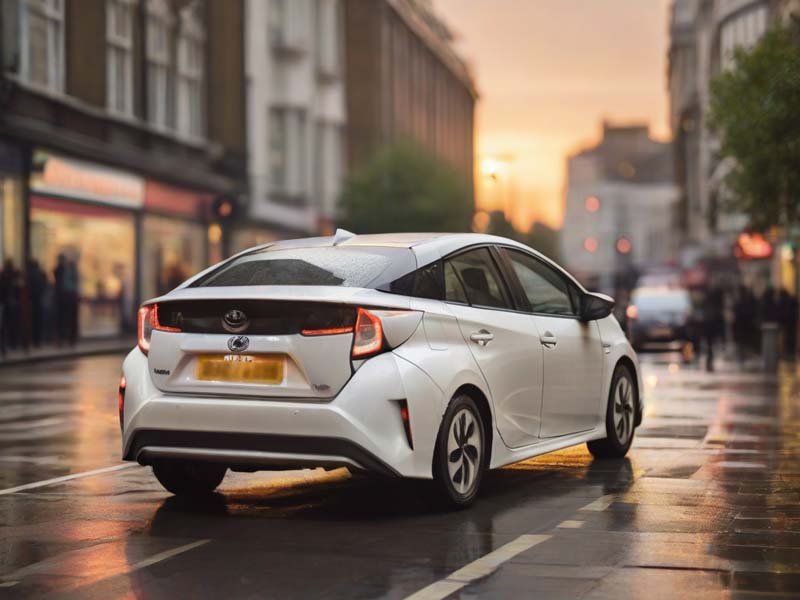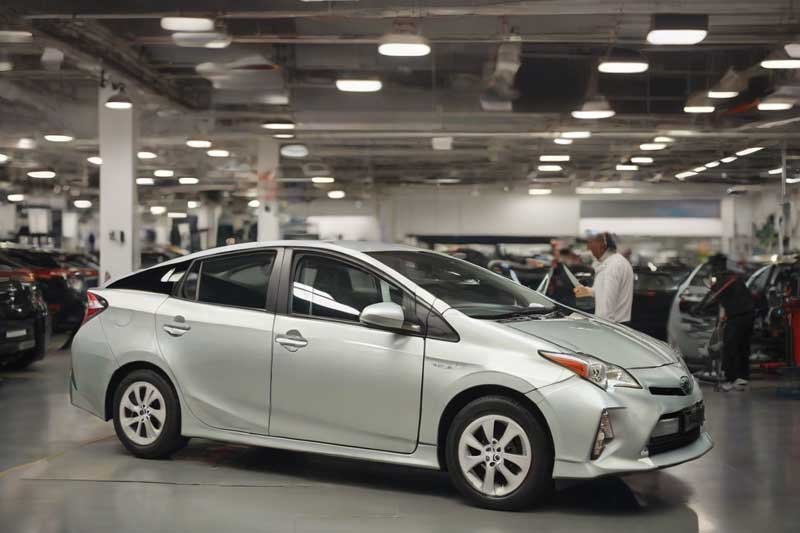Understanding the specific Uber car requirements for London is essential if you’re planning to drive with Uber.
This beginner’s guide will provide a breakdown of Uber’s car requirements in London. A lot of these requirements are set by Transport for London (TfL). They are the regulatory body who are responsible for licensing all private hire vehicles.
For beginners, renting a licenced car is often the easiest option. However, if you are thinking of purchasing your own car, knowing the key requirements is crucial. The last thing you want is for your investment to go wrong.
You should always check the Uber and Transport for London websites for updated information or changes to the requirements. If you are a licensed driver, TfL will also send regular updates via email.
In Summary: Uber Car Requirements in London
- Vehicle Age: Must be 10 years old or newer from the date of first registration.
- Doors and Seating: The car must have four doors and a minimum seating capacity of 4 passengers.
- Vehicle Condition: The car must be in good condition and free of cosmetic damage.
- Emission Standards: The car must meet Transport for London’s emission standards.
- Insurance and MOT: You must have hire & reward insurance and carry out MOT checks every 6 months
Uber Car Requirements in London

Transport for London (TfL) is the licensing authority in London for private hire drivers and operators, such as Uber. This also includes licensing private hire vehicles. Private hire vehicles require licensing through a TfL-approved centre before they can be used for rides.
Here is an extensive list of car requirements set by Transport for London and Uber that you should consider before buying a car:
1. Vehicle Age
Vehicles presented for first licensing in London must be no older than 10 years from the date of first registration with the DVLA or the country of origin.
For Uber Comfort cars, the age limit is 7 years, while for UberExec and Lux cars, it is 6 years.
2. Model Requirements
- Doors: All vehicles must have 4 independently opening doors.
- Passenger Capacity: Minimum seating for four passengers is required, except for UberXL which requires seating for at least 6 passengers.
By ensuring your vehicle meets these Uber car requirements in London, you adhere to local licensing authority standards, promoting safety and compliance.
3. Vehicle Condition and Appearance
Maintaining your vehicle in excellent condition is vital for meeting Uber car requirements in London. Here are the key standards:
General Condition
- Operational Status: Your vehicle must be well-maintained, with no mechanical issues that could affect safety or comfort.
- Cosmetic Appearance: There should be no significant cosmetic damage. The vehicle must present a clean and professional appearance.
Appearance Requirements
Vehicles must also meet specific appearance standards to align with Uber’s professional image:
| Requirement | Details |
|---|---|
| Commercial Branding | No commercial branding or advertisements are allowed on the vehicle’s exterior or interior. |
| Clean Title | Vehicles must have a clean title; salvaged, reconstructed, or rebuilt vehicles are not allowed on the platform. |
Condition Checklist
- Exterior: Check for and repair any significant dents, scratches, or damages.
- Interior: Maintain a clean and tidy interior environment, free from odors and stains.
Adhering to these Uber car requirements in London not only enhances passenger experience but also upholds the high standards expected by both Uber and Transport for London (TfL).
4. Car Emission Standards
Adhering to stringent emission standards is crucial for Uber vehicles in London to comply with environmental regulations and Uber’s sustainability goals. Here’s what you need to know:
Zero Emission Capable (ZEC) Requirement
- From January 1, 2023: All private hire vehicles (PHVs) licensed for the first time must be zero emission capable (ZEC) and meet specific emission thresholds to operate within London.
Emission Criteria by Vehicle Type
Here is a breakdown of the emission criteria based on vehicle type:
| Vehicle Type | CO2 Emissions | Minimum Zero Emission Range | Compliance |
|---|---|---|---|
| Fully Electric and Hydrogen Fuel Cell | 0 g/km CO2 | N/A | Automatically compliant with ZEC standards |
| Hybrid Vehicles | No more than 50g/km CO2 | At least 10 miles | Must operate with zero exhaust emissions for the specified range |
| Hybrid (Extended Range) | No more than 75g/km CO2 | At least 20 miles | Must operate with zero exhaust emissions for the specified range |
Euro 6 Standards
- Internal Combustion Engines: Vehicles equipped with an internal combustion engine must meet at least the Euro 6 emissions standard, ensuring reduced nitrogen oxide and other pollutants.
Meeting these emission standards is essential for driving with Uber in London, contributing to a cleaner, greener urban environment. Ensure your vehicle complies with these regulations to maintain eligibility for operation on the Uber platform in London.
5. Legal and Licensing Requirements

Driving with Uber in London requires adherence to strict legal and licensing standards set by Transport for London (TfL). Here’s what you need to know to ensure your vehicle complies:
Private Hire Vehicle Licence
- Issued by TfL: Your vehicle must have a valid Private Hire Vehicle Licence. This licence is issued only after your vehicle has been inspected at a TfL-approved centre.
Essential Documents Keeping the necessary documentation in order is crucial for compliance and operation on the Uber platform in London.
| Document | Requirement | Details |
|---|---|---|
| Vehicle Registration Certificate (V5C) | Up-to-date | Must match owner details without any evidence of tampering or forgery. Must include correct VIN. |
| Insurance Certificate | Current and valid | Must specifically cover hire and reward. Ensure that the insurance certificate is original or a high-quality photocopy and clearly indicates the vehicle is insured for private hire use. |
| MOT Certificate | Annually for vehicles over 12 months old | Must be issued no more than 14 days prior to the licensing inspection. Validates vehicle’s roadworthiness. |
Compliance with Local Regulations
- TfL Standards: Your vehicle and all documentation must align with TfL’s rigorous standards. This ensures safety, legality, and compliance for operating as a private hire vehicle in London.
Modifications and Advertisements
- Vehicle Modifications: Any modifications, especially those related to accessibility (e.g., for disabled access), must receive prior approval from TfL. This ensures that modifications meet safety and functionality standards.
- Advertising: External signage or advertising is restricted. Only TfL-approved materials may be displayed, and these must not obstruct the driver’s or passengers’ views or interfere with vehicle operations.
By diligently ensuring that these legal and licensing requirements are met, you uphold the standards necessary for safe and legal operation as an Uber driver in London. Regular checks and updates on TfL regulations are recommended to maintain compliance and operational readiness.
6. Inspection and Compliance Process

To ensure safety and compliance with Transport for London (TfL) standards, all Uber vehicles in London must undergo a detailed inspection process. Here’s what you need to know:
Booking Your Inspection
- Schedule Online: Book your vehicle inspection through the TfL website. Ensure your vehicle meets all requirements before booking to avoid failed inspections.
Inspection Checklist The following table outlines the major areas assessed during the Uber vehicle inspection process:
| Inspection Area | Details |
|---|---|
| Vehicle Exterior | Check for any cosmetic damage; ensure no commercial branding is visible. |
| Vehicle Interior | The interior must be clean, tidy, and free of odors. |
| Tyres and Brakes | Tyres must have adequate tread depth; brakes must function properly. |
| Lights and Signals | All lights and signal indicators must be operational. |
| Windows and Doors | Ensure all windows and doors function correctly and are damage-free. |
Compliance with Standards
- Pass Required: Your vehicle must pass this inspection to be eligible to drive with Uber. Inspections are typically required annually or after any significant repairs or modifications.
Post-Inspection
- Certification: Upon passing the inspection, you will receive a certificate indicating your vehicle meets all Uber and TfL requirements.
- Re-Inspections: Prepare for potential annual re-inspections to maintain your vehicle’s compliance status.
Ensuring your vehicle passes this inspection is crucial for maintaining eligibility to drive with Uber in London. It reflects your commitment to providing safe and reliable service to passengers.
6. Popular Vehicle Choices for Uber Drivers in London
Choosing the right vehicle is crucial for Uber drivers in London, as it impacts both the driver’s earnings and passenger satisfaction. Here are some of the most popular vehicle choices among Uber drivers in London, known for their reliability, fuel efficiency, and comfort.
Recommended Vehicles
Here is a table of popular vehicle models that meet Uber car requirements in London, offering good fuel efficiency, passenger comfort, and compliance with TfL standards:
| Vehicle Model | Type | Notable Features |
|---|---|---|
| Toyota Prius | Hybrid | High fuel efficiency, low emissions, spacious interior. |
| Kia Niro | Hybrid | Balances practicality with efficiency, comfortable ride. |
| Hyundai Ioniq | Hybrid/Electric | Excellent economy, spacious, and reliable performance. |
| Tesla Model 3 | Electric | Zero emissions, luxury feel, high-tech features. |
| Nissan Leaf | Electric | Affordable, zero emissions, ideal for city driving. |
Choosing the Right Vehicle
- Considerations: When selecting a vehicle, consider the total cost of ownership, including maintenance and fuel or charging costs. Additionally, think about the comfort features that can attract higher ratings and more rides.
Selecting one of these popular models can help ensure that you meet the Uber car requirements in London and provide a comfortable, reliable, and environmentally friendly option for your passengers.